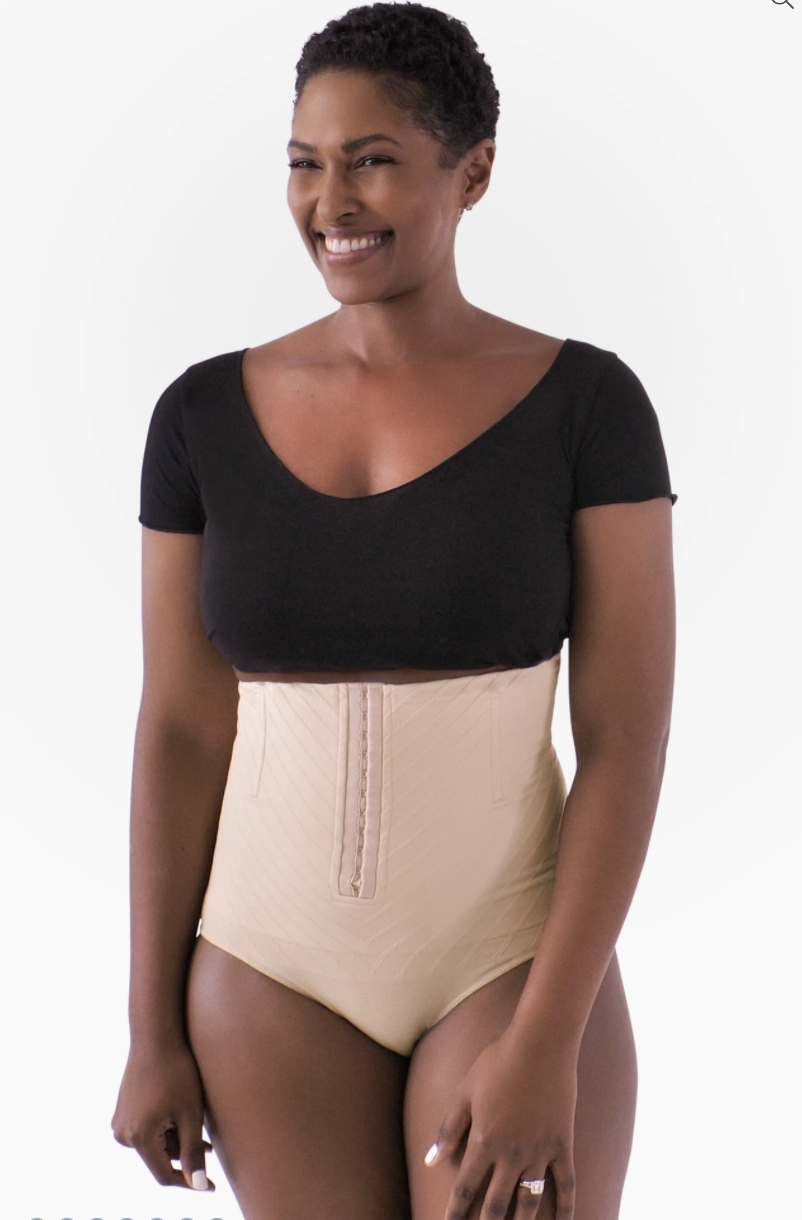If you can not tolerate your usual exercise routine, do regular but more gentle exercise. Take a prenatal dance class, gentle yoga, or a pregnancy exercise class. A good instructor can help you maintain proper posture, and learn how to strengthen your abdominal, back and extremity muscles. Swimming is another option, as it allows you to get great exercise without any weight on your back.
Put on a maternity support garment like Bellefit before you start each day, especially if you were out of shape before the pregnancy or have poor abdominal muscle tone after several children, if you are overweight, carrying a big baby or twins, or on your feet a lot. Many specialty stores stock lightweight maternity girdles with soft elastic fronts and an adjustable belt if you are looking for alternatives.
STRESS REDUCTION FOR PAIN REDUCTION
Emotions greatly influence nerve and muscle interaction. Try to put yourself in a more positive, joyful and calm state by reading uplifting books, watching movies and listening to podcasts that inspire or make you laugh, and spending time with those who bring out your finest moods.
Stress leads to increased muscle tension and pain. Although easier said than done, limit your stress and inner tension, and increase feelings of calm by taking a “healing interval” a few minutes several times each day. Sit quietly with your eyes closed and think and do absolutely nothing, meditate, practice breathwork or pray. Do regular yoga (especially Yin, prenatal, gentle and restorative), practice progressive muscle relaxation techniques (yoga nidra), QiGong, Tai Chi, or take a walk outside in nature. Read these recent blog posts on natural remedies for stress and ways to manage your emotions.
The following breathwork exercises are simple to do and can be done any time and place. For example, while traveling, waiting in line, resting, before rising in the morning and going to bed at night, in the bath, on the toilet, or whenever you feel stressed or triggered.
When all is otherwise healthy and well, throughout all the exercises, practice embracing, relaxing into and even magnifying intense sensations without the mental story about them. Can you make friends with discomfort and pain, instead of trying to escape, numb or fight it? Is there something that they can teach you? Get curious about all of their details, including the borders or edges, and parts of you that feels good, or does not have unpleasant sensations. Yes there are remedies to help alleviate pain. But you will be amazed how effective this practice is, and how much it will help you to better cope with childbirth, as well as with the pain that is an inevitable part of being human. It is the suffering from the pain that is optional, so you can choose not to suffer.
Sit up straight but comfortably, with your eyes closed, internally keeping your gaze between your eyes, or open and focused on a nonmoving distant object or place. You can do this reclining, as long as you are not likely to fall asleep - the point is to be conscious throughout. While breathing be mindful, and just observe and release any muscle tension working your way slowly from head to toe. Practice Ujjai breathing. Breathe at the pace and depth that feels right for you, but by inhaling through your mouth or nose, directing the breath into the back of your throat which makes a sound like ocean waves (it is a calm, slow, and smooth circular version of gasping on inhale and fogging a mirror on exhale). This is meditation, combined with the benefits of breathwork.
Breath Awareness
Start with being more conscious about your breath, and simply focusing all of your attention on your breathing. Get curious about all the details of your sensations as you inhale and exhale, without trying to change anything. Notice what you are currently seeing, hearing, smelling, feeling, tasting. Just watch without judgment. This brings you to the present and is deliciously relaxing.
Deep Abdominal Breathing
Exhale slowly with an audible sigh, releasing all muscle tension, especially in your jaw and breathing diaphragm muscle.
Inhale slowly through your nose for a count of 4. Imagine a pump expanding your abdomen, and lower back, down to your pelvic floor, causing you to inhale. Allow ribs to expand with air, then inhale air into your upper chest towards your collarbone and shoulders.
Exhale slowly through your mouth for a count of 4. Release effortlessly, in the same order you inhaled, returning to baseline, your abdomen, ribs, then upper chest. With each exhalation, try to let go and relax even more.
Repeat this cycle a total of 8 times or at least a few minutes. You may need to play with counts, using a count of 3 or maybe even 5 or 6. But keep the counts of inhale the same as the counts of exhale.
Then extend, or double the exhale. For example, if you are inhaling to a count or 3, exhale to a count of 6, or if you are inhaling to a count of 4, exhale to a count of 6. And repeat this cycle for several minutes.
Triangle Breathing
Inhale for a count of 3 or 4, exhale to the same count of 3 or 4, then pause for the same count of 3 or 4, while consciously and deeply relaxing your diaphragm muscle of respiration, as well as all other muscles. Repeat for several cycles or a few minutes.
Box Breathing
Another great breathing technique that disengages your conscious attention from thought and relaxes the nervous system, and can be done any time, is box breathing. With this exercise, you add a timed pause between each inhalation and exhalation.
Set a timer for 5-10 minutes.
Inhale deeply into your belly as above for a count of 3.
Hold without tension for a count of 6.
Exhale to a count of 6 while consciously relaxing more and more.
Hold again without tension for a count of 3.
Repeat until your timer chimes. You may love this so much you will want to do it longer.
Breathing In Varied Ratios
Play with the ratios and counts of inhalation, exhalation and the pauses in between them. For example, exhale slowly through your mouth with an audible sigh. Inhale slowly through your nose for a count of 4, hold for a count of 7, then exhale through your mouth for a count of 8. Repeat for a total of 8 cycles.
Forced Exhalation Breathing
One more breathing exercise to try is forced exhalation:
After a normal breath, try squeezing as much air out as possible using your intercostal muscles.
Next, allow the breath to come in naturally and deeply, but automatically.
Repeat the cycle for several minutes or as long as you like.
See what feels best for you in each situation. Make these sorts of deep breathing and breath awareness practices, meditation and authentic yoga a regular part of your daily routine, even for 20-30 minutes.
Practice abdominal breathing as much as possible so it becomes habitual. This is the ideal form of breathing, as opposed to rapid shallow breathing. Do this by imagining a pump expanding your abdomen and lower back, which causes you to inhale. The pump then releases effortlessly, which causes you to exhale. Then there is a natural pause until you need to inhale again.
If you need video instruction, take my breathwork online course.
Don’t hesitate to schedule a session with me if you need more guidance with mastering breathwork and experiencing its transformative power.























